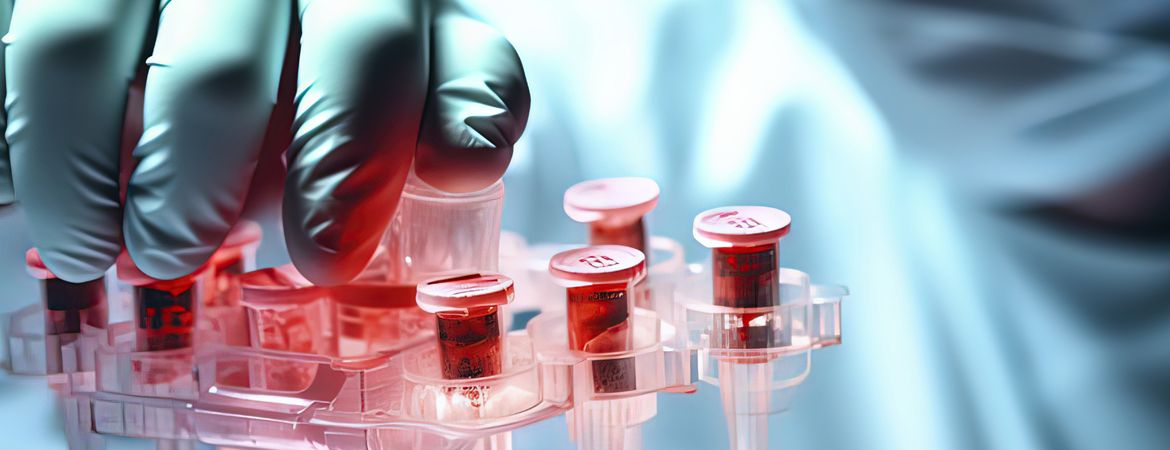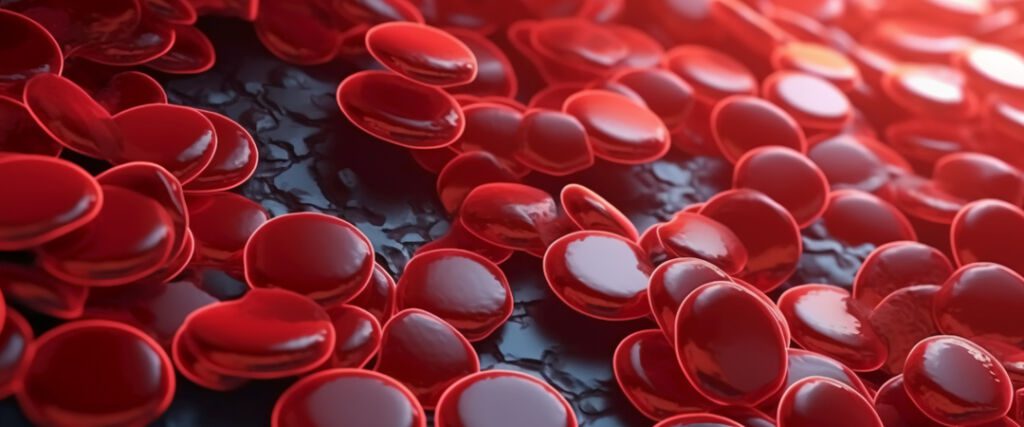
Haematological diseases are a complex subject, but one that is essential to understand for anyone wishing to maintain their health. Whether you are a health professional or simply curious about the mysteries of blood, this article will give you all the information you need.
Haematological disorders cover everything to do with blood, including blood clotting disorders, blood diseases such as anaemia and leukaemia, and diseases of the lymphatic system. Understanding these diseases can help you to recognise them, prevent them and get the best possible care if you have them.
In this article, we’ll look at the different types of blood disorders, their symptoms, causes and treatments. You’ll also discover the risk factors associated with these conditions and the steps you can take to prevent them.
Get ready to dive into the fascinating world of haematological diseases and broaden your knowledge of this important topic in human health.
TYPES OF HAEMATOLOGICAL DISORDERS
Haematological disorders are all diseases of the blood, including clotting disorders, blood disorders such as anaemia and leukaemia, and diseases of the lymphatic system. Understanding these diseases can help you to recognise them, prevent them and get the best possible care if you are affected.
Haematological disorders can be divided into different categories, each with its own characteristics and health implications. The most common types of haematological disorders include bleeding disorders such as haemophilia and thrombophilia, blood disorders such as sickle cell disease and thalassaemia, and blood cancers such as leukaemia and lymphoma. Each type of haematological disorder has specific symptoms and requires different approaches to treatment.

Anaemia:
Anaemia is a condition in which the body does not have enough healthy red blood cells. Red blood cells carry oxygen to the body’s tissues and organs. They also help remove carbon dioxide from the cells. Without enough red blood cells, the body doesn’t get enough oxygen, which can lead to shortness of breath and tiredness.
Anaemia is caused by the body not making enough healthy red blood cells, or by the bone marrow not making enough red blood cells for one reason or another. Anaemia has many causes, but is most common in women during pregnancy or after childbirth due to iron deficiency.
There are many types of anaemia, including iron deficiency anaemia, thalassemia, haemoglobinopathies and aplastic anaemia. In most cases, treatment consists of taking iron supplements or increasing the amount of iron in the diet.
Leukaemia:
Leukaemia is a general term for cancer of the blood and bone marrow. The most common type of leukaemia for adults is chronic lymphocytic leukaemia (CLL). For children, acute lymphoblastic leukaemia (ALL) is much more common.
Leukaemia is a cancer that develops in blood cells called stem cells or leukocytes. Leukocytes are part of the body’s immune system. They fight infections and help the body get rid of old blood cells. Stem cells make all types of blood cells: white blood cells, red blood cells and platelets.
The most common treatment for leukaemia is chemotherapy, which uses powerful drugs to kill or suppress fast-growing cancer cells. Other treatments include radiotherapy, biological therapy and stem cell transplantation.
Diseases of the lymphatic system:
Lymphatic diseases are a group of conditions that affect the lymphatic system. The lymphatic system is a collection of vessels and lymph nodes that transport fluids throughout the body and help fight infections. The lymphatic system includes the lymph nodes, spleen, tonsils, thymus, bone marrow, appendix and Peyer’s patches in the small intestine.
Diseases of the lymphatic system include:
- Lymphoma – cancerous tumours caused by malignant (cancerous) cells.
- Leukaemia – cancer of the white blood cells.
- Lymphoedema – swelling caused by abnormal accumulation of lymph fluid.
- Malabsorption syndrome – disorder in which nutrients cannot be properly absorbed by the body due to certain digestive problems.
Haemophilia:
Haemophilia is a bleeding disorder characterised by an inability to clot blood properly. In haemophilia, the ability of the blood to clot is either absent or severely reduced. Haemophilia is caused by a deficiency in one of the proteins needed for normal blood clotting. Haemophilia A, also known as classic haemophilia, is the most common form of haemophilia.
People with haemophilia tend to bleed longer than normal when they are injured. Bleeding into joints can cause severe pain and swelling, and sometimes permanent joint damage. Bleeding into muscles can cause them to swell and become painful or stiff. Bleeding into internal organs can be life-threatening.
Thrombophilia:
Thrombophilia is a condition that makes a person more prone to developing a blood clot. Blood clots can form in any part of the body and can be deep vein thrombosis (DVT) or pulmonary embolism (PE).
It’s important to know that having thrombophilia does not mean that you will develop a blood clot. It simply means that you have an increased risk of blood clots compared to people who do not have the condition.
Sickle cell disease:
Sickle cell anaemia is a genetic disorder that causes abnormal haemoglobin (Hgb) to form in red blood cells. The cells can then take on a sickle shape, making them stiff and sticky and making it difficult for them to pass through small blood vessels.
Sickle cell anaemia is the most common form of sickle cell disease. It accounts for about 90% of all cases, according to the National Heart Lung and Blood Institute (NHLBI).
People with sickle cell disease can also suffer from other complications such as stroke, kidney failure, infections and painful seizures.
Sickle cell anaemia is a chronic condition that tends to get worse over time if not treated properly. In severe cases, complications can develop rapidly if left untreated, leading to death within days or weeks from organ failure or infection.
Thalassaemia:
Thalassaemias are a group of disorders in which there is an abnormal production of haemoglobin, the protein in red blood cells that carries oxygen around the body.
There are two main types of thalassaemia: alpha and beta. People with alpha thalassaemia have reduced levels of haemoglobin a, which can lead to anaemia and fatigue. People with beta thalassaemia have reduced levels of haemoglobin b, which can lead to an enlarged spleen, jaundice, enlarged liver and heart failure.
Thalassaemia can be diagnosed by a blood test or a genetic test. Treatment depends on the severity of symptoms and may include medication, transfusions and surgery.
Blood cancers:
Blood cancers are a group of diseases that affect the blood and bone marrow. They can be non-cancerous (benign) or malignant (cancerous).
The most common blood cancer is acute myeloid leukaemia (AML). This disease causes an overproduction of immature white blood cells that crowd out healthy red blood cells, platelets and other important blood elements.
Other blood cancers include:
- Acute lymphoblastic leukaemia (ALL) – also known as acute lymphoblastic leukaemia.
- Chronic myeloid leukaemia (CML) – also known as chronic myeloid leukaemia
- Chronic lymphocytic leukaemia (CLL)

COMMON SYMPTOMS OF BLOOD DISORDERS
The symptoms of haematological diseases can vary depending on the type and severity of the disease. However, there are some common symptoms that can be seen in many haematological conditions. These include persistent tiredness, abnormal bleeding, frequent bruising, recurrent infections, pale skin and mucous membranes, and shortness of breath. It’s important to recognise these symptoms and consult a healthcare professional if you notice them, so that an early diagnosis can be made and appropriate treatment started.
CAUSES AND RISK FACTORS FOR HAEMATOLOGICAL DISORDERS
The causes of haematological disorders can vary depending on the type of disorder. Some blood disorders are caused by inherited genetic abnormalities, while others can be triggered by environmental factors such as exposure to toxic chemicals or radiation. Risk factors for haematological disorders can also vary, but some common elements include a family history of haematological disorders, exposure to toxic substances, viral infections, autoimmune disorders and certain medications.
DIAGNOSIS OF HAEMATOLOGICAL DISORDERS
The diagnosis of haematological disorders is based on a combination of factors, including the patient’s symptoms, medical history, physical examination and laboratory tests. Blood tests are often used to assess blood cell counts, clotting rates, and the presence of markers specific to certain haematological disorders. In some cases, imaging tests such as x-rays, ultrasound or CT scans may also be needed to assess the extent of damage or abnormalities.
TREATMENT OPTIONS FOR HAEMATOLOGICAL DISORDERS
Treatment options for haematological disorders depend on the type and severity of the condition. In some cases, no specific treatment is needed and regular monitoring may be sufficient. Other haematological conditions may require treatments such as medication, blood transfusions, bone marrow transplants or targeted therapies. Treatment of haematological disorders can be complex and often requires a multidisciplinary approach involving haematologists, oncologists, surgeons and other healthcare professionals.
LIVING WITH A HAEMATOLOGICAL CONDITION
Living with a haematological condition can be challenging, but it is possible to lead a full life with the right care and support. It’s important to follow doctor’s advice, take prescribed medication, eat a balanced diet, exercise regularly and manage stress. Emotional support and membership of support groups can also be beneficial for people with haematological conditions and their loved ones.
PREVENTING AND MANAGING HAEMATOLOGICAL CONDITIONS
While some haematological conditions cannot be prevented, there are steps you can take to reduce your risk or manage your condition. Eating a healthy, balanced diet, getting regular exercise, avoiding exposure to toxic substances, taking precautions to prevent infections and following your doctor’s advice are just some of the important preventive measures. Managing haematological conditions also means seeing your doctor regularly, having follow-up tests and following recommended treatments.
SUPPORT RESOURCES FOR PEOPLE WITH HAEMATOLOGICAL CONDITIONS
There are many support resources available for people with haematological conditions and their loved ones. Organisations such as patient associations, support groups and online forums can provide information, emotional support and practical advice. It’s important to get in touch with others who are going through similar experiences to share stories, advice and find mutual support.
CONCLUSION
Haematological conditions can be complex, but by understanding the different types of condition, their symptoms, causes and treatment options, you can better prepare yourself and take steps to protect your health. Whether you’re a healthcare professional or simply curious, it’s important to familiarise yourself with this important topic for human health. By following prevention tips, seeking early diagnosis and following medical recommendations, you can improve your quality of life and take charge of your haematological health.

